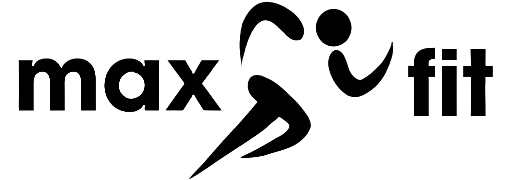A fitness plateau occurs when your body adapts to the demands of your exercise routine to the point where improvements in strength, endurance, or muscle growth slow down or stop completely. Initially, rapid gains are common, but as your body becomes accustomed to your workout stimulus, progress can decelerate.
- Physiological Adaptation: Your muscles, tendons, and nervous system all adapt to regular training. This adaptation is a sign of efficiency but can mean that the same exercises no longer provide a sufficient challenge.
- Neuromuscular Efficiency: Early training improvements are often a result of better motor unit recruitment and improved coordination. Once these neural adaptations are maxed out, further gains require changes in muscle fiber composition and hypertrophy.
- Metabolic Adjustments: Your metabolism adjusts to regular exercise, often making your body more efficient at using energy. This means that the same workout can burn fewer calories over time, which may be a problem if weight loss is one of your goals.
Common Causes of Plateaus
Understanding why you hit a plateau is the first step in overcoming it. Here are some of the most common causes:
1. Lack of Progressive Overload
Progressive overload is the cornerstone of continued improvement. Without gradually increasing the demands on your muscles, your body will eventually reach a point where it no longer needs to adapt.
- Intensity and Volume: If you’re not increasing the weight, the number of sets, or the intensity of your workouts, your muscles won’t be pushed past their current limits.
- Diminishing Returns: After the initial gains from starting a new exercise, your body becomes more efficient, meaning the same workout yields fewer benefits over time.
2. Insufficient Variation
Repetition without variation leads to a plateau. Your body thrives on new challenges.
- Exercise Selection: Relying on the same exercises day after day can cause your muscles to adapt. Incorporating new movements or variations (such as switching from a barbell squat to a front squat) can stimulate further growth.
- Training Modalities: Mixing resistance training with cardio, high-intensity interval training (HIIT), or even yoga can provide novel stimuli that push your body in different ways.
3. Inadequate Recovery
Fitness gains aren’t made during workouts—they’re made while you recover.
- Overtraining: Excessive training without sufficient rest can lead to burnout and injury. Studies show that muscles require time to repair and strengthen after intense exercise.
- Sleep and Nutrition: Recovery is heavily influenced by sleep quality and nutritional intake. Inadequate sleep and poor nutrition can both hinder your ability to progress.
4. Nutritional Shortcomings
Diet plays a pivotal role in supporting your training efforts.
- Macronutrient Balance: Your body requires the right balance of protein, carbohydrates, and fats to repair muscles and fuel workouts. Even slight imbalances can slow progress.
- Caloric Intake: For strength or muscle gains, you may need a caloric surplus, whereas for weight loss, a deficit is necessary. Both extremes require periodic adjustments as your body composition changes.
5. Stagnant Mindset
A rigid approach to training can hinder progress. Mental barriers are often as significant as physical ones.
- Fear of Change: Sticking to the same routine because it feels safe can prevent you from trying new methods that might yield better results.
- Lack of Motivation: Psychological fatigue can occur when you feel stuck. Incorporating new goals or finding a workout partner can reinvigorate your drive.
Strategies to Break Through a Plateau
Overcoming a plateau requires a multi-faceted approach that addresses both the physical and psychological dimensions of training. Here are several strategies, backed by research and expert recommendations, to help you push past your current limits.
1. Implement Progressive Overload
Progressive overload means continually challenging your muscles by increasing the stress placed on them.
- Increase Weight or Resistance: Gradually add more weight to your exercises. Even small increments can force your muscles to adapt.
- Add More Reps or Sets: If increasing the load isn’t feasible, try increasing the number of repetitions or sets.
- Reduce Rest Intervals: Shorter rest periods between sets can increase the intensity of your workouts and promote cardiovascular benefits.
2. Change Your Training Routine
Altering your workout routine can shock your body into growth.
- Periodization: This is a systematic planning of training that cycles through different phases—such as hypertrophy, strength, and endurance—to maximize gains and reduce the risk of overtraining.
- Split Training vs. Full-Body Workouts: Switching between training splits (focusing on different muscle groups on different days) and full-body workouts can provide variety.
- Incorporate Unilateral Movements: Exercises that focus on one side of the body (like single-leg squats or one-arm presses) can help address imbalances and stimulate new muscle growth.
3. Optimize Recovery
Your body needs rest to repair and grow stronger.
- Scheduled Rest Days: Incorporate regular rest days into your training program to prevent overtraining.
- Sleep Hygiene: Aim for 7–9 hours of quality sleep per night. Sleep is when much of the muscle repair occurs.
- Active Recovery: Light activities such as walking, stretching, or yoga can promote blood flow and reduce muscle stiffness.
4. Revise Your Nutrition
Nutritional strategies can be as important as your training regimen.
- Protein Intake: Aim for 1.2 to 2.2 grams of protein per kilogram of body weight to support muscle repair and growth.
- Carbohydrate Timing: Consuming carbohydrates before and after workouts can provide energy for exercise and aid in recovery.
- Micronutrients: Ensure you’re getting enough vitamins and minerals to support overall health. For instance, magnesium and vitamin D are crucial for muscle function and recovery.
5. Embrace Cross-Training
Cross-training can prevent boredom and overuse injuries while challenging your body in new ways.
- Different Modalities: Incorporate activities like swimming, cycling, or rowing into your routine. These activities provide cardiovascular benefits and work muscles that might not be targeted in your regular training.
- Functional Training: Exercises that mimic real-life movements can improve overall body coordination and strength. Consider kettlebell training, plyometrics, or bodyweight exercises.
- Sports and Recreational Activities: Engaging in sports like basketball, soccer, or tennis can provide a fun way to stay active and challenge your body differently.
6. Focus on Mindset and Motivation
Mental strategies are crucial for long-term fitness success.
- Set New Goals: Whether it’s improving a specific lift, running a faster mile, or simply trying a new class, new goals can reignite your enthusiasm.
- Visualization and Mindfulness: Mental imagery techniques and mindfulness practices can help you overcome psychological barriers.
- Seek Professional Guidance: Personal trainers or sports psychologists can offer new perspectives and customized plans to help you break through plateaus.
7. Monitor Your Progress with Technology
Modern technology can offer detailed insights into your training progress and recovery.
- Fitness Trackers: Devices that measure heart rate variability, sleep quality, and workout intensity can provide real-time data to optimize your training.
- Mobile Apps: Apps that log workouts and nutrition can help you identify trends and adjust your program accordingly.
- Wearable Tech: Tools like smartwatches or chest straps can monitor performance metrics, providing objective data to help you understand when you need to change your routine.
8. Experiment with Training Techniques
Sometimes, the key to breaking a plateau lies in experimenting with different training modalities.
- High-Intensity Interval Training (HIIT): Short bursts of intense exercise followed by rest can improve both cardiovascular fitness and metabolic rate.
- Eccentric Training: Focusing on the lowering phase of an exercise can stimulate muscle growth by creating greater muscle tension.
- Drop Sets and Supersets: These techniques increase workout density and can lead to greater muscular fatigue, promoting hypertrophy.
Scientific Insights Behind Plateaus
Muscle Adaptation and the SAID Principle
The SAID (Specific Adaptation to Imposed Demands) principle states that your body adapts specifically to the type of stress you place on it. When you perform the same exercise with the same intensity over a long period, your body becomes highly efficient at that movement, leading to diminishing returns. Research in exercise physiology consistently shows that varied stimuli—whether through changes in intensity, volume, or exercise selection—are necessary to trigger further adaptation.
Hormonal Influences
Training plateaus can also be linked to hormonal responses. For example, the anabolic hormones (like testosterone and growth hormone) that promote muscle growth may level off as your body adapts. Changing your routine can stimulate different hormonal pathways. Studies have found that varying exercise intensity and incorporating compound movements can elevate these hormones, aiding in breaking through plateaus.
Recovery and Inflammation
Recovery is a critical component of adaptation. Research demonstrates that inflammation and muscle damage induced by exercise are signals for muscle repair and growth. However, chronic inflammation due to overtraining without proper recovery can hinder progress. Integrating active recovery and ensuring proper sleep and nutrition are scientifically proven methods to enhance the recovery process.
Crafting a Long-Term Strategy for Continued Progress
Periodization and Long-Term Planning
Designing your training program with cycles of progressive overload, variation, and recovery in mind is essential for long-term success. Periodization involves structuring your training year into phases (e.g., base building, strength development, peaking, and recovery). This approach not only helps prevent plateaus but also minimizes the risk of injury.
- Macrocycles and Microcycles: Macrocycles are long-term plans (often a year or more), while microcycles are weekly plans that focus on specific training goals.
- Deload Weeks: Scheduled periods of reduced intensity give your body time to repair and prepare for future challenges.
Importance of Adaptability
Fitness is a dynamic journey that requires you to remain adaptable. As you evolve, so should your training program. Regularly assessing your progress through measurable data (like performance metrics and body composition analysis) can help you identify when it’s time for a change.
- Tracking Progress: Maintain a training log or use digital tracking tools to monitor improvements and setbacks.
- Feedback Loops: Listen to your body and adjust your routine if you experience excessive fatigue, pain, or loss of motivation.
Actionable Tips to Implement Today
- Revamp Your Workout Routine:
- Swap out familiar exercises for variations (e.g., switch barbell bench presses for dumbbell presses or incline bench presses).
- Introduce new training techniques such as supersets or circuit training to increase intensity.
- Assess Your Nutrition:
- Reevaluate your caloric intake and macronutrient ratios based on your current training intensity and goals.
- Consider timing your meals around your workouts to maximize energy and recovery.
- Prioritize Recovery:
- Schedule regular rest days and integrate light, active recovery sessions.
- Focus on improving sleep quality by establishing a consistent sleep schedule and creating a restful environment.
- Set New Goals and Track Progress:
- Define clear, measurable short-term and long-term goals.
- Use a fitness journal or mobile app to record workouts, monitor progress, and adjust your plan based on performance.
- Seek Expert Advice:
- Consult with a fitness coach or nutritionist who can provide personalized guidance.
- Consider joining a community or group training program to stay motivated and accountable.

